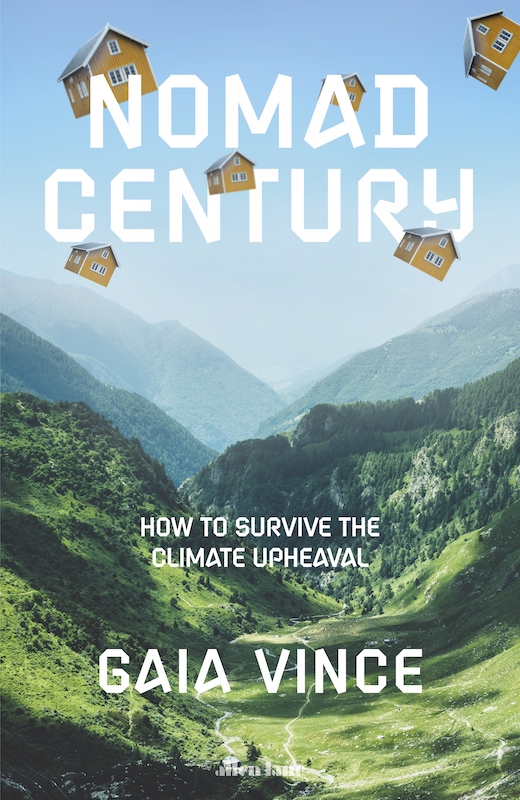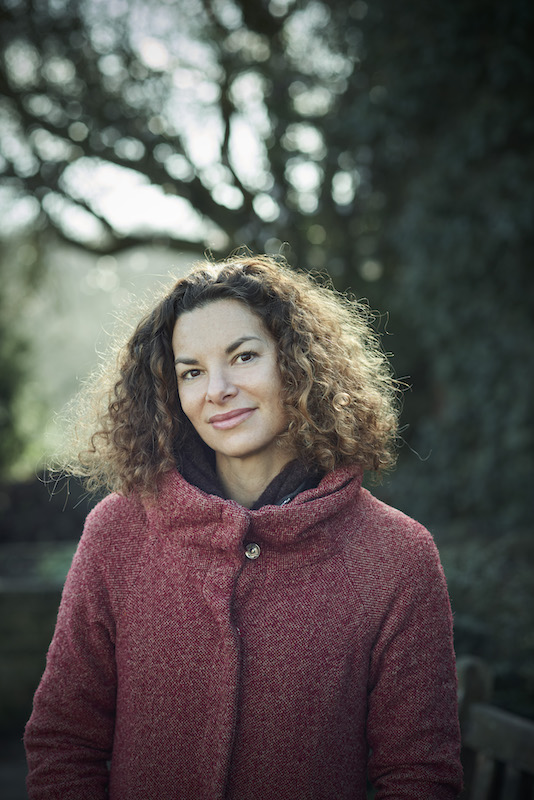The idea “migration will save us” is probably the last thing most European policymakers would choose to tell citizens. Yet, this is the firm conclusion that science writer Gaia Vince comes to in her latest book, Nomad Century: How to Survive the Climate Upheaval (Allen Lane, August 2022).
While EU leaders may accept the need for some level of migration to show solidarity with those in need, they are also generally clear about the importance of protecting the bloc’s borders. Vince argues that this stance is hopeless in the face of climate change, which will render swathes of the world uninhabitable and force billions of people to move. Embrace migration or face terrible consequences, she warns.
The EU response to the Russian invasion of Ukraine, which has forced millions of people to flee their homes, suggests that “Fortress Europe” is a little less impenetrable than it was during the 2015 refugee crisis. Indeed, when outlining his vision for the EU’s future migration policy at the end of August, German Chancellor Olaf Scholz praised Europe’s “progress on migration policy.” But in the face of rabid anti-migration rhetoric from certain politicians, including far-right parties in Italy and Hungarian Prime Minister Viktor Orban, progress remains limited.
“We have allowed the narrative around migration to become toxic, to become racist,” says Vince when she spoke to me via video link from her home in the UK. “But it doesn’t have to be like that.” She cites surveys “even in populist nations” showing that “most people are not incredibly prejudiced”. People living in cities (which are “all built on immigration”) tend “not to be anti-migrant” — “they are multi-cultural, a lot of them are migrants or they are considering becoming migrants, they live with or have fallen in love with migrants”.
“We have allowed the narrative around migration to become toxic, to become racist.”
Migration tends to be portrayed as an aberration. The assertion by former UK Prime Minister Theresa May during the Brexit campaign that “if you believe you are a citizen of the world, you are a citizen of nowhere” perfectly espoused this way of thinking. Vince argues, however, that migration “is a completely normal part of human life”. The problem stems from the “strange” tale, unrelated to reality, that people are fed, and which encourages them to be afraid of migrants, she says.
Instead of framing migration as a security issue, politicians should sell it as an economic issue, insists Vince. Fully integrating migrants can help ageing, Western societies, whose populations are decreasing, solve their economic woes. Instead, we often exclude people, “stop them working; keep them in special camps on the edge of starvation; give them some benefits, but not quite enough; give them some rights but not enough,” and allow black market economies to arise that compete with the state economy.
 “Can you explain to your kids why some people are not allowed to go to school or to have jobs? We can’t as it is nonsensical, we build these artificial barriers between people, and it doesn’t help anybody,” she adds.
“Can you explain to your kids why some people are not allowed to go to school or to have jobs? We can’t as it is nonsensical, we build these artificial barriers between people, and it doesn’t help anybody,” she adds.
The levels of migration we will have to cope with as climate change gets worse will be like nothing the world has seen before. At the beginning of August, Frontex, the EU border agency, reported that 7.6 million Ukrainian nationals had entered the EU since Russia’s invasion on 24 February. The Syrian civil war, which started in 2011, created six million refugees, many of whom attempted to make their way to Europe. Such figures are small fry in comparison to future projections.
The UN International Organization for Migration estimates there could be as many as 1.5 billion environmental migrants in the next 30 years. “After 2050, that figure is expected to soar as the world heats further and the global population rises to its predicted peak in the mid-2060s,” writes Vince. “Disasters already displace up to ten times more people than conflict and war.”
Faced with such mind-boggling numbers, the temptation is to hunker down and carry on mindlessly – business as usual – or simply fling up your hands up in desperation. Such responses are not, however, doing anyone any favours, insists Vince. Everyone who has spent time thinking about climate change is to some extent “full of despair and hopelessness,” she admits, but believing “we are doomed is incredibly unhelpful and untrue.” There is a “hell of a lot we can do”.
 Gaia Vince | Photo: Phil Fisk
Gaia Vince | Photo: Phil Fisk
Humanity’s situation is “extremely perilous”, but at the same time, “the future is unwritten; it is ours to make,” says Vince. To turn this around, we must “lift up our heads and tackle what we are facing head on.” We need to stop “just letting stuff happen to us” and take control: “Imagine the future that we could have and chart our path to achieving it,” she says.
Since extreme weather events — from flooding such as that seen in Pakistan this summer to the intense and prolonged heatwaves in China and India — will make mass migration inevitable, we need today to “start a conversation about our options and what we are going to do”.
Vince’s book is full of thoughts and theories about how to shape this new world. A UN Migration Organization “with real powers” will be vital to manage such significant human movement, says Vince, and as cities in the southern hemisphere become uninhabitable, new ones will have to be built in cooler climes.
Vince also explores different options that could be implemented to help countries move people to safer places. “Will Bangladesh rent land in Siberia, or will Bangladeshi citizens just be absorbed into a country like Canada, or will it buy land, like the US bought Alaska from Russia?”
As cities in the southern hemisphere become uninhabitable, new ones will have to be built in cooler climes.
The alternative to planning for and enabling mass migration is geo-engineering, the deliberate large-scale intervention in the Earth’s natural systems, argues Vince. One potential technology is solar radiation that could reflect a small proportion of the sun’s energy back into space, counteracting the temperature rise caused by climate change.
But allowing countries to play with nature is highly controversial and offers its own regulatory and governance issues. Vince believes most people, if given the choice, would opt for managed migration over geo-engineering.
“We have to build a much more progressive narrative about migration,” she concludes, showing that people are the resource that drives the economy. We must also take the moralising out of discussions, she adds, noting that most of those who will be forced to move have done the least to cause climate change.
“It is perfectly possible to create a livable future, but we need to plan ahead,” she says. Most “disastrous” of all would be if we opt not to exercise our ability to make choices.
Sign up to The Parliament's weekly newsletter
Every Friday our editorial team goes behind the headlines to offer insight and analysis on the key stories driving the EU agenda. Subscribe for free here.